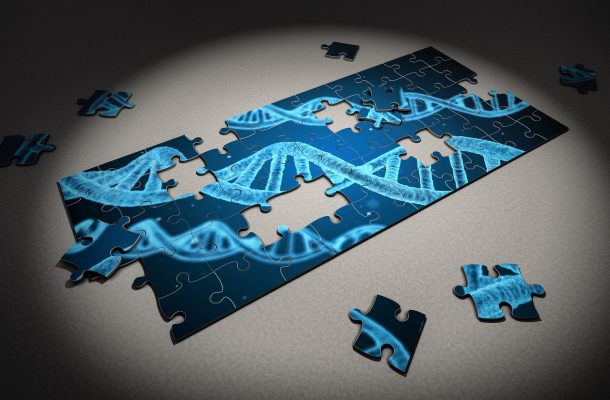Solving the genomic jigsaw puzzle of health

Most diseases have a genetic component. To better understand disease, researchers led by the Garvan Institute of Medical Research are analysing genetic information to determine what keeps us healthy.
In a world first, the team has compiled a genome reference database of thousands of healthy older Australians, which has the potential to predict disease-linked gene variants more accurately than has been previously possible.
The researchers released the first 2,570 genomes of the Medical Genome Reference Bank (MGRB) and published their analysis in the journal Nature Communications.
The MGRB is a collaboration led by Garvan, Monash University’s ASPREE study and the Sax Institute’s 45 and Up Study.
“By doing a comprehensive analysis of healthy individuals, we can get a much clearer understanding of which genes are and which are not linked to disease. The Medical Genome Reference Bank will provide an ideal background for the future of genomic research in Australia,” says Professor David Thomas, Garvan Cancer Research Theme Leader and Director of The Kinghorn Cancer Centre.
A baseline of healthy ageing
Every person has around 6 billion DNA ‘letters’ in their genome, which encodes all of the information needed to make and run every cell in the body. Between any two unrelated people, there are millions of single letter differences, or variations.
Variations make us different, but some of them can cause disease – the challenge for researchers is to pinpoint which these are.
The authors of the current paper publish the genomic data of 2,570 healthy older Australians (64 – 95 years old) that were free from cancer, cardiovascular disease or neurodegenerative disease until the age of at least 70. These individuals were participants of the ASPREE study and the 45 and Up Study.
“This first release of data from the Medical Genome Reference Bank gives researchers a much more statistically powerful framework to identify new disease-causing gene variants,” says Professor Thomas.
“For instance, when we analysed genomes of prostate cancer patients, we found that using the MGRB as a ‘control’ gave us a 25% higher predictive power of disease-linked gene variants than another genome database that is commonly used by researchers to find such variants.”
Determining biological age from DNA
Using whole genome sequencing, the researchers were able to detect genetic changes associated with ageing, including shorter telomeres, the ‘caps’ at the ends of chromosomes, and less mitochondrial DNA, which codes for the energy generators of cells. Interestingly, the researchers found that the amount of mitochondrial DNA was associated with a higher grip strength in men.
“We were able to detect changes in the genomes that could distinguish between healthy older individuals that share the same age, but have different physical function. This indicates that the DNA in an individual’s blood sample may provide a better indicator of their ‘biological age’ than their chronological age,” says Professor Thomas.
“The ability to derive a measure of biological age may better predict health outcomes for individuals. As our population ages, understanding the genetic basis for healthy ageing will become more and more important,” says Professor Thomas.
The first release of the data is available to researchers via the Vectis platform. Once completed, the Medical Genome Reference Bank will contain genomic data from over 4,000 older Australians.
Open Forum is a policy discussion website produced by Global Access Partners – Australia’s Institute for Active Policy. We welcome contributions and invite you to submit a blog to the editor and follow us on Facebook, Linkedin and Mastadon.














